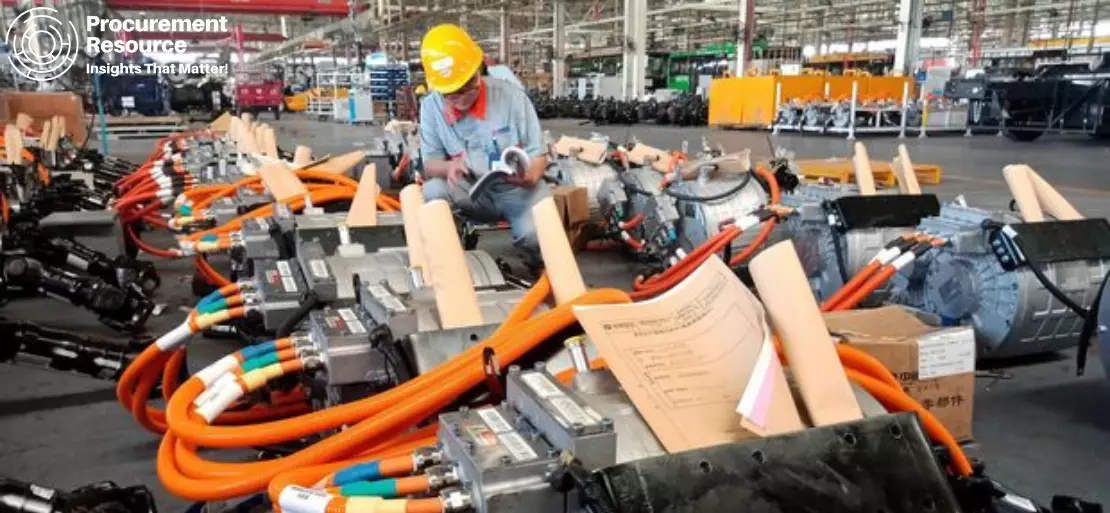China Leading the Path for Recovery in the Asia Manufacturing Hub Post COVID-19

With the rapid spread of the COVID-19 pandemic, which has claimed the lives of millions of people, countries across the globe have been forced to go under lockdown. The world economic outlook is grim, and many countries have fallen into recession. Spending has also fallen. The lower demand for certain products like electronics, automobiles, metals, and chemicals directly affect the manufacturing industry. While small and big scale manufacturing and exports have taken a huge hit due to this pandemic, signs of improvement are showing.
China can be called the world’s manufacturing hub. China had imposed a lockdown of 13 cities in the central Hubei Province in January to contain the virus. This had severely affected the conduction of business, especially the manufacturing industry. China’s exports to the European Union was down by 24% and with the U.S., down by 21% compared to last year. China’s auto sales were down by 92% in February.
As China is the world’s largest manufacturer of automobiles by a large margin, this had also adversely affected the global industry. A majority of the world’s electronics are either entirely or in part manufactured in China. With factories struggling to get up and running, it is unlikely that they will be able to meet the demand. However, manufacturing activities in China are picking up pace fuelled by the rising domestic demand.
China was able to successfully act on and contain the virus in the early stages. As a result, 98.9% of China’s major industrial enterprise has already begun production as of March 28. Out of 66 factories polled by management consulting firm Kearney, all had resumed operation with 80% capacity and are expected to be back to normal in early April. In June, China’s General Manufacturing Purchasing Manager’s Index (PMI) rose to 52.8 in July from 51.2 in June. This is the highest jump since January 2011. A number above 50 signals an expansion in activity.
This fast recovery can be traced back to the gradual lifting of restrictions on business and transportation, starting in late January. This PMI figure tells us that China is on its path of recovery, and it may continue in the upcoming quarters also. China saw a 3.2% year-on-year growth in GDP in the second quarter.
From a contraction of 6.8% in the first quarter to a 3.2% growth in the next shows the strength of China’s industries. Falling export orders and employment have, however, been dragging the recovery down. Trade wars with the U.S. and other countries are also affecting China’s manufacturing hubs.
Asia has become a manufacturing hub through protectionism, investment, and support. But the recovery in the other hubs has not been as positive as China’s.
Factory activity is very low in Vietnam, another manufacturing hub for the world. Though they have outperformed the pandemic and have opened their domestic economy, consumption is far from pre-COVID level growth trajectory. Manufacturing is a crucial part of Vietnam’s economy, and it has one of the highest trade-over-GDP ratios in Southeast Asia. It is waiting for global consumption to rise. As China went into lockdown, their supply lines were disrupted, and exports declined due to falling demand. As near term recovery is uncertain, investments have been pulled back.
There has been a 21% drop in foreign direct investment commitments just in Q1. The government is taking steps to revive this sector by ramping up the production of protective equipment (PPE) for workers. As China was moving away from labour markets and global economies were looking for substitutes, Vietnam was an ideal choice. With the global economy reopening, its manufacturing sector is expected to recover and grow. It can fill up the gap left by China, leading to higher growth figures.
Japan, another Asian manufacturing hub, will also have a gradual recovery. However, the recovery has been slow; therefore, exports have been affected. Japan had been seeing negative growth in factory activity since the pandemic started. In July, the factory index did not decline further.
This shows that manufacturers were gaining confidence and opening up their factories. Output has been slow due to the contracting orders. Consumer goods production had stabilised in July due to recovering demand. Capital goods suffered from a lack of export sales. Lack of demand for Japanese vehicles has caused output cuts and closures of steel mills and metals fabricators. This is due to reduced global investment spending and constrained trade flows.
Manufacturing is picking up. Manufacturing indices are slowly churning positive growth numbers or are reporting slowing down of negative growth. All of these indicate the industry’s expectation of business picking up pace soon. Indices have been at a decade low, but recovery will be fuelled by pent up demand, bringing in significant spurts in their growth.
The domestic market has improved due to the need for essentials, but manufacturing needs international trade to support it. This depends on whether the pandemic has a second wave and the countries’ ability to tackle the same. Governments now know how to have their economy running in the face of a virus; thus, manufacturing is poised to have a steady positive growth in the future.

-(1).webp)

.webp)